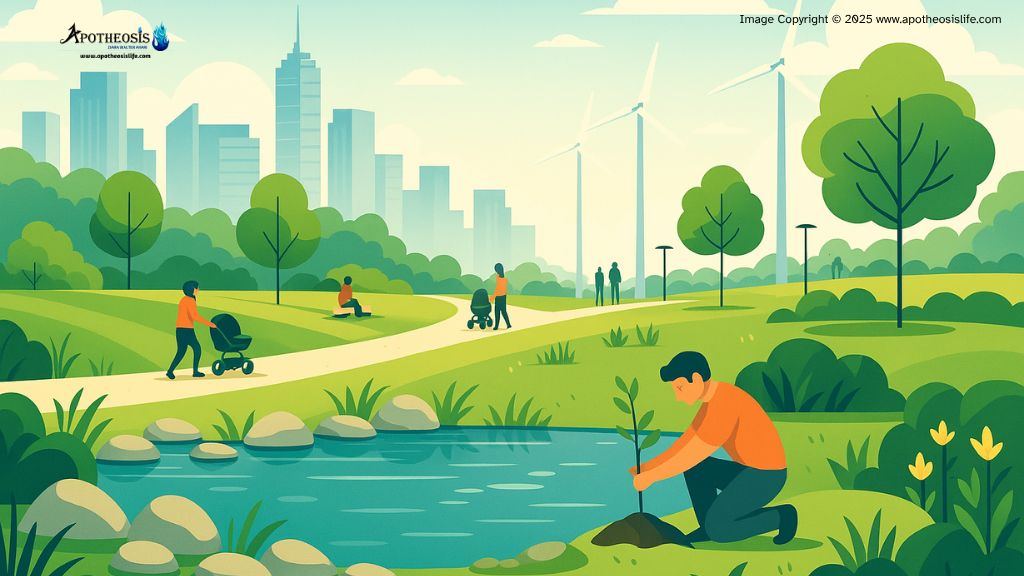As cities expand and populations grow, urban landscapes face mounting challenges: flooding, air pollution, extreme heat, and biodiversity loss, to name a few. Traditional infrastructure—concrete roads, stormwater drains, and steel buildings—often exacerbates these issues by disrupting natural systems. But what if our cities could work with nature, rather than against it? That’s where green infrastructure comes in.
What Is Green Infrastructure?
Green infrastructure refers to a network of natural and semi-natural systems designed to deliver ecological, economic, and social benefits. This includes green roofs, rain gardens, urban forests, permeable pavements, bioswales, and wetlands—all of which mimic the natural water cycle, cool the environment, improve air quality, and support biodiversity.
Unlike grey infrastructure, which is engineered to control and redirect nature, green infrastructure collaborates with it.
Benefits Beyond Beauty
Green spaces are often considered aesthetic upgrades. But green infrastructure provides far more than visual appeal:
★ Climate Resilience: By absorbing rainwater and reducing runoff, green infrastructure helps manage urban flooding and protects against storm surges.
★ Improved Air Quality: Trees and vegetation filter pollutants and sequester carbon.
★ Urban Cooling: Vegetation reduces the urban heat island effect, making cities more livable during extreme heat events.
★ Biodiversity Hubs: Green corridors support pollinators and provide habitats for wildlife in concrete-heavy environments.
★ Enhanced Well-being: Access to green spaces is linked to better mental and physical health.

A digital rendering of an urban park highlighting stormwater management, biodiversity zones, and pedestrian-friendly green design.
Image Copyright © 2025 www.apotheosislife.com
Examples from Around the World
Cities worldwide are turning to green solutions:
★ Singapore has integrated vertical gardens, green rooftops, and urban wetlands across its cityscape.
★ New York City’s High Line transformed an abandoned railway into a thriving linear park.
★ Copenhagen redesigned public squares to double as flood reservoirs during heavy rainfall.
These examples prove that investing in green infrastructure is not only environmentally sound but economically wise.
Barriers to Adoption
Despite its benefits, green infrastructure is not yet mainstream. Common obstacles include:
★ Funding Gaps: Initial investment costs can be higher than traditional alternatives.
★ Maintenance Challenges: Unlike concrete, green systems require ongoing care and ecological knowledge.
★ Policy Inertia: Building codes and urban planning often favor conventional infrastructure.
Overcoming these barriers requires integrated planning, public-private partnerships, and a shift in how we value natural assets.
As climate impacts intensify, green infrastructure offers a sustainable path forward—one that cools our cities, manages water wisely, and reconnects people with nature. But to realize this vision, it must be treated not as a luxury, but as essential urban infrastructure.
Building cities that work with nature is no longer optional. It is a necessity for a livable, resilient future.
Details of the Featured Image
Caption: Sustainable Cityscape with Integrated Green Infrastructure
Description: This digital illustration presents a sustainable city environment that incorporates essential elements of green infrastructure, including rooftop gardens, bike-friendly streets, and green public spaces. It reflects the harmony between modern development and ecological design, emphasizing the importance of integrating nature into urban spaces.
Image Copyright © 2025 www.apotheosislife.com
Author
Ziara Walter Akari
© 2025 www.apotheosislife.com
